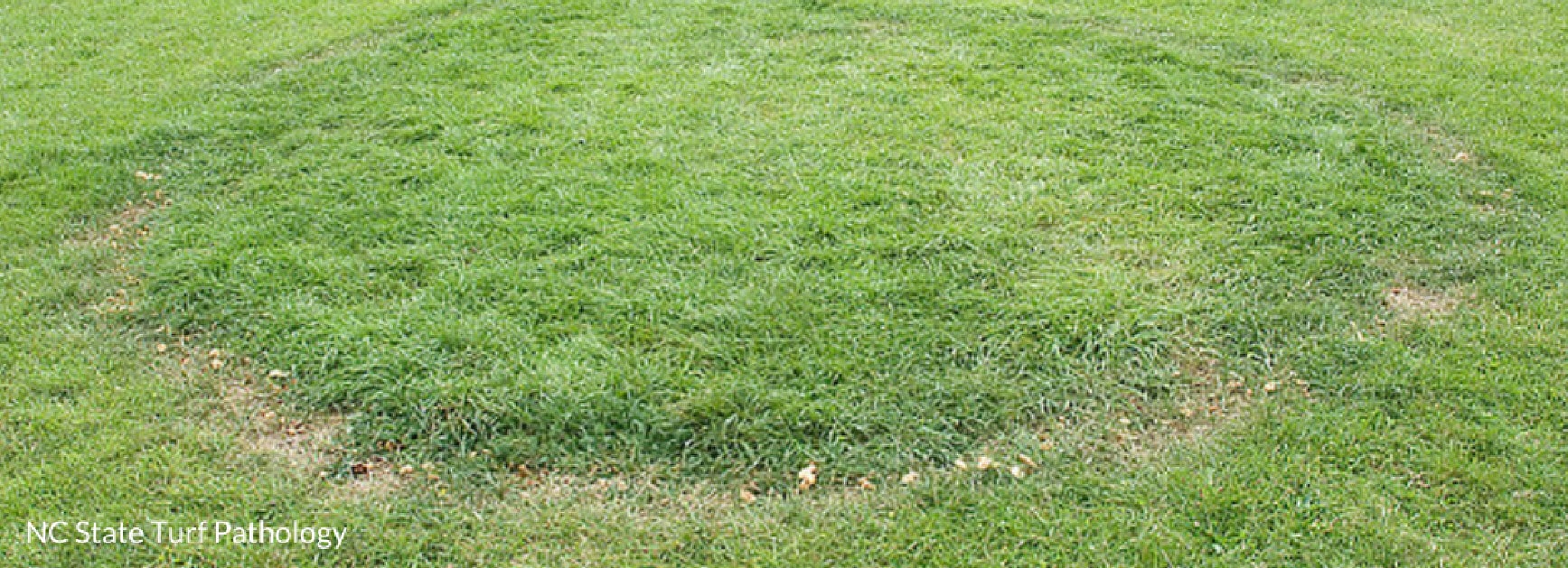Fairy Ring

North & South
Grass varieties affected
- All grass species
Disease occurrence
- Late-March through early-November
Symptoms
- Large arcs or rings consisting of very green grass, dead grass, mushrooms or puffball mushrooms in particular, or a combination of them all.
Management
- Before planting, remove organic matter such as tree stumps and rotting lumber from the soil.
- Stick to a proper fertilization program to increase the nitrogen in the soil.
- Mow unaffected areas first and diseased areas last to avoid infecting areas of a healthy lawn.
- Collect and dispose of grass clippings in the garbage when the fairy ring lawn disease is present.
- To avoid spreading the fungus, after mowing, clean the mower blades by rinsing with water and drying with a cloth.
- Removing the mushrooms won’t control the fungus, it simply improves the appearance of your lawn.
- If the fairy ring consists only of mushrooms and there’s no dark green grass, the mushrooms can be picked or raked off and disposed of in the garbage, especially if children and pets are present, as the mushrooms may be poisonous. Chopping the mushrooms with a mower may also be adequate for removal, especially if there are a large number of mushrooms.
- Water deeply and infrequently early in the day to allow the leaf blades to dry off and not remain wet for long periods of time.
- Regularly dethatch and aerate your lawn, which helps prevent fairy ring from developing.
- If the fairy ring becomes an ongoing problem, treating the lawn with a fungicide or removing the soil may be necessary.

